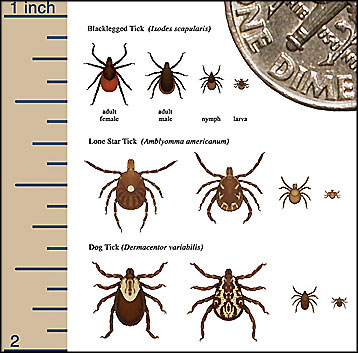
Many people pull off ticks with their fingers and crush them with their finger nails, but do they take the time also to wash their hands afterwards? And this procedure for removing and killing ticks is frowned upon by health officials.
Through their body fluids--like saliva and blood--ticks can give humans diseases such as Rocky Mountain spotted fever, erlichiosis, tularemia, Lyme disease and lyme-like illnesses.
Ticks most often transmit diseases after they have been feeding for two or more days. People who have been in areas most prone to having ticks--like moist, cool places under ground cover, brush or leaves--should do a frequent tick check. Look in warm places such as underarms, sock-line, behind the ears, in hair or under tight-fitting clothing.
Permethrin-containing repellent applied to boots and clothing is the suggestion for creating protection that should last several days. An insect repellent with no more than 30% DEET should be used by adults and not given to children younger than two months old for a few hours protection. It should be washed off as soon as possible and kept off of one's hands to avoid ingesting it.
If a tick is spotted, it should be removed promptly using tweezers to grasp it as close to one's skin as possible. It takes about 10 days for a tick that is engorged with blood to fall off by itself. After the tick is removed the body site should be washed with soap and water.
Most tick bites will heal on their own. If a fever, muscle pain or headache followed by a rash develops, a health care provider should be contacted.






Comments